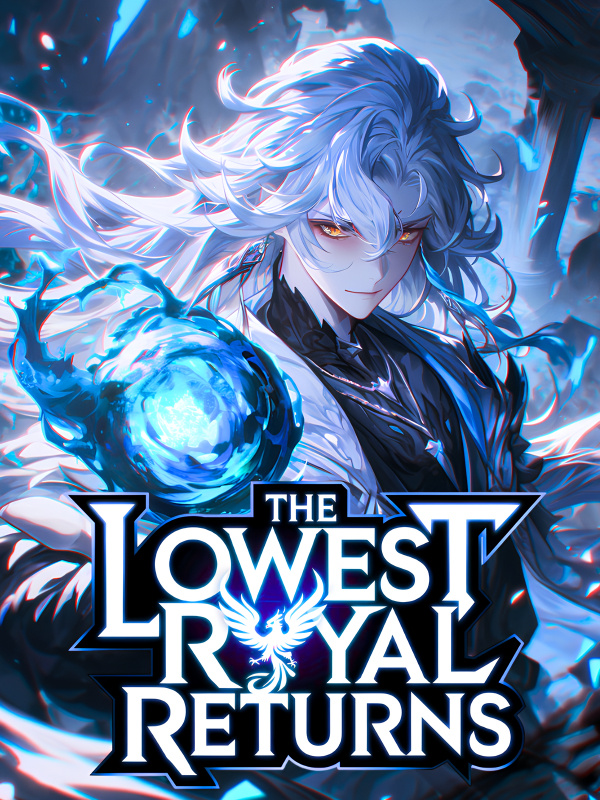©WebNovelPub
The Guardian gods-Chapter 563
Chapter 563: 563
This became evident as Ikenga observed the enormous, grotesque plant he had created, which now bore one of his very eyes as a grotesque fruit. The plant, a testament to his power, remained oblivious to his presence, thanks to the applied curse that perfectly concealed him. He can perceive and interact with his creations hence why he could teleport here easily.
This limitation on his direct spatial influence also explains his restricted teleportation. He found he could not teleport from the Abyss or the goblin world. His unique form of traversal is confined to the corrupted land, a place that holds no inherent attachment to either the Abyss or the goblin world. This corrupted land is, in essence, a nature of its own being formed, not complete yet hence why Ikenga can easily influence or act on it.
Ikenga continued his solitary walk across the barren lunar surface, his bare feet making no sound as they "mapped" the ground beneath him. Suddenly, he paused. A subtle fluctuation in space, not far away, caught his attention. Directing his focused gaze, his divine sight pierced the veil, revealing a hidden truth.
There, in the void, was a small, inconspicuous station. Within it, a mage was meticulously engaged in what appeared to be research. Yet, every so often, her gaze would drift, landing squarely on the moon and the grotesque plant that now bore one of Ikenga’s eyes. A faint smile touched Ikenga’s lips. It seemed the mages hadn’t forgotten his unspoken threat to unleash the moon itself upon them. Unperturbed by her observation, Ikenga resumed his walk.
As Ikenga continued his silent promenade, a strange and profound transformation began to occur. With every step, pieces of his very being began to fall away, dissolving into shimmering spores of light. These luminous particles didn’t dissipate; instead, they were gently absorbed by the moon itself. The process was gradual but relentless. Soon, there was no longer a visible Ikenga on the lunar surface, only the subtle, growing luminescence within the moon. He hadn’t vanished; he had become one with the celestial body, seeding it with his divine essence.
The spores of light, now fully integrated into the moon’s core, began to pulse with a faint, internal rhythm. Ikenga, no longer a physical presence but an essence woven into the very fabric of the celestial body, felt a familiar stirring within him. It was the echo of his previous act of creation on the barren planet, but this time, the scale was far grander, the potential far more immense.
Before he was in a hurry and the process was rushed, he could not fully observed how the seed needed for the last planet was formed. This time he planned to watch closely.
Due to the scale of his new project, Ikenga invited a few friends usually ignored by him and other origin gods. He reached out, his divine consciousness a vast, intricate network extending beyond the lunar surface, into the deep currents of the void. This time, he sought not to merely create, but to collaborate. He called upon the fundamental elemental forces that sculpted the universe itself: the unyielding strength of Earth, the furious dance of Fire, the caressing, yet carving, breath of Wind, and the life-giving flow of Water.
These weren’t entities to be commanded, but ancient, titanic powers he would entreat, offering the moon as a canvas for their raw, untamed expression. He would provide the vessel, the nascent framework for life, and in return, they would pour their elemental might into shaping a nature with him.
As Ikenga forged this cosmic pact, the moon began to respond. With the subtle, deep hum. First, from deep within the lunar crust, an Earth-infused will began to manifest. Jagged, obsidian spires, veined with unknown metallic glows, slowly pierced the dusty surface, drawing nourishment from cosmic dust and the moon’s own dense core. They twisted and turned, forming cavernous structures and soaring peaks that defied the vacuum.
Then came the whispers of Wind. Ethereal, shimmering currents of cosmic gas, energized by distant solar flares, began to sweep across the nascent landscape. They sculpted the obsidian peaks, eroding them into elegant, impossible formations, and carried luminous spores that way breathed out from the huge plant hosting Ikenga’s eye, from one nascent crater to another, seeding new growth.
Next, the Fires of Creation ignited. Not destructive flames, but the cool, luminous infernos of stellar nurseries. Veins of pure, incandescent plasma, like rivers of solidified starlight, began to flow beneath the moon’s newly formed crust, providing warmth and energy to the burgeoning ecosystem. On the surface, strange, phosphorescent flora, born from the interaction of solar radiation and lunar dust, pulsed with internal light, their blossoms unfurling slowly in the silent void, drawing sustenance from cosmic rays.
After the fire, Ikenga felt the land was ready for plants to grow in it, as so began days, week and months of plants growing and dying.
Reason why it was taking so long even after Ikenga already had a template of plant needed to survive in this moon was because he wanted more than planting growing. He wanted to create an atmosphere on this moon.
And he wanted to do this with the help of unique plants, His process w began with the deliberate cultivation of pioneer flora. These aren’t just any oxygen-producing plants; they are specially designed, through his inherent nature divinity. These plants would be incredibly efficient photosynthesizers, rapidly converting the moon’s surface minerals and solar energy or reflected light from a nearby planet into vast quantities of oxygen. But beyond just oxygen, these specialized botanical lifeforms could also exhale other trace gases crucial for atmospheric stability—gases that contribute to a protective ozone layer, help regulate temperature, or even bind with existing lunar dust to prevent atmospheric escape.
This was where the elemental forces become indispensable partners. Air elementals, for instance, aren’t just passive dispersers; they become active sculptors of the burgeoning atmosphere. Imagine them as living currents, guiding the newly released gases across the moon’s surface, ensuring even distribution and preventing pockets of inert or toxic air from forming. They could actively churn the nascent atmosphere, creating the first rudimentary wind patterns, aiding in the dispersal of spores from the pioneer plants, and mixing the different gas components into a homogenous blend.
Furthermore, these elementals were guided by Ikenga to stabilize the atmosphere against solar winds and cosmic radiation. They began to form a subtle, ethereal barrier, a shimmering shield woven from concentrated air and magic, deflecting harmful particles. Over time, as the atmosphere thickens, this elemental intervention began to shift from active shielding to more subtle guidance, maintaining equilibrium and fostering the conditions for a stable water cycle to eventually emerge.
Finally, the essence of Water trickled forth. Not liquid water, for that would freeze instantly in the vacuum, but an ethereal, almost gaseous form of condensed water energy – a "spiritual water" that flowed through the internal channels of the moon. This energy sustained the newly formed plants, allowing the bizarre, resilient flora to thrive and grow, defying the harsh realities of space. It became the lifeblood of this alien, yet profoundly natural, domain.
It was at this time that Ikenga began to toy with his cursed divinity, He poured his cursed essence into the obsidian growths, giving birth to what he mentally named "The Blight of Stone Silence." He hoped this curse would drain the life-force and even the will to act from any mage or intruder who dared to stand upon these growths, slowly petrifying them from the feet up, or perhaps even rendering them utterly immobile, unable to cast spells or move.
Into the currents of the cosmic wind, he wove the "Whispers of Misdirection." His ambition for this curse was to subtly manipulate the very perceptions of those exposed to it, causing spells to go awry, targeting to fail, and even allies to turn against each other in confusion. He imagined it as an invisible fog of despair and discord, carried on the elemental breeze.
The luminous plasma flows became vessels for the "Flame of Diminishment." He hoped this curse would slowly leach the magical energy from any mages drawing too close, turning their potent spells into sputtering sparks, and eventually leaving them powerless, their arcane wellsprings utterly dry.
Finally, the ethereal spiritual water became the conduit for the "Tide of Entropy." This was his most ambitious curse, intended to accelerate the decay and dissolution of magical constructs, protective wards, and even the very bodies of his enemies. He envisioned it as an invisible rot, gradually unraveling the fabric of their being and their creations.
With the cosmic garden thriving and his experimental curses weaving through the very fabric of the moon, Ikenga moved to his final, most audacious act. His physical form might be dissolved, but his will, now intrinsically bound to the moon, was absolute. He intended to turn this celestial body into a temporary, accessible anchor for his power, a strategic point he could reach whenever the ultimate confrontation with the mages arrived.
The source of this c𝐨ntent is fre𝒆w(e)bn(o)vel







